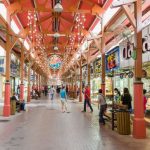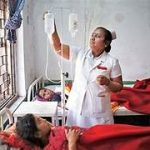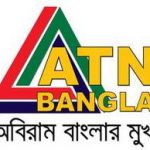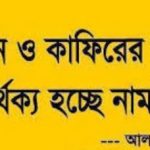Bogra District with a zone of 2919.9 sq km, limited by joypurhat and gaibandha locale on the north, the chalan beel, natore and sirajganj areas on the south, jamuna stream and jamalpur region on the east, Part of Chalan Beel, naogaon and Natore regions on the west.
Bogra (Town) established in 1850 comprises of 12 wards and 46 mahallas. Bogra region was set up in 1884. It has a territory of 18.85 sq km. The town has a populace of 150138; male 52.37%, female 47.63%. Education rate among the town individuals is 63%. Bogra is known as the mechanical city of the North Bengal. Developments of the bangabandhu jamuna multipurpose extension had upgraded a wide range of exchange and trade in Bogra. The town is celebrated for its social exercises.
Organization: Bogra area was set up in 1821 comprising of 9 thanas, of which four from Rajshahi locale (Adamdighi, Bogra, Sherpur, Nawkhila), 3 from Dinajpur region (Lalbazar, Badalgachhi, Khetlal), and two from Rangpur region (Gobindaganj, Dewanganj). In 1983 Bogra region was isolated into two regions (Bogra and Joypurhat). Bogra region comprises of 5 regions, 48 wards, 166 mahallas, 11 upazilas, 109 union parishads, 1782 mouzas and 2706 towns. The upazilas are adamdighi, bogra sadar, dhunat, dupchanchia, gabtali, kahaloo, nandigram, sariakandi, sherpur, shibganj, sonatola
Archeological legacy: Kherua Mosque at Sherpur, remainders of the verifiable mahasthangarh, Bara Masjid, Mazar (tomb) of Shah Sultan Balkhi, Gokul Medh, Parshuram’s Palace, Vasu Vihara.
Verifiable: Mahasthangarh (pundranagara), found 10 km toward the north of Bogra town, was the capital of pundravardhana. Amid the 4th to 8th century BC this locale was controlled by different administrations. From the center of 8th century it went under Pala decide that proceeded till 12th century. Sena King vijayasena vanquished the district overcoming the last Pala King madanpala. Bogra went under the Muslim govern after bakhtiyar khalji vanquished Nadia. In 1281-1290 AD, Sultan Nasiruddin Bagra Khan, the second child of the ruler of Delhi Sultan ghiyasuddin balban turned into the leader of Bengal. Bogra was named after him. The opposition to British Fakir-Sannyasi development spread over Bogra district subsequent to the early British guideline. The pioneer of the fakirs majnu shah had direct experiences with the British. The Indigo Rebellion spread over Bogra in mid 19th century.
Religios: Mosque 4102, sanctuary 372, congregation 3, Jain Temple 1, holy place 2. Populace 2988567; male 50.84%, female 49.16%; Muslim 91%, Hindu and others 9%.
Proficiency and instructive establishments: Average education 28.4%; male 35.4%, female 21%. Instructive foundations: school 44, optional school 299, middle school 85, grade school 1363, madrasa 329, medicinal school 1, educator’s preparation school 2, professional instructor’s preparation establishment 1, polytechnic organization 1, essential instructor’s preparation foundation 2, specialized preparing focus 1, ntrams 1, law school 1, workmanship school 1, agrarian preparing foundation 1.
Daily papers and periodicals: Daily Karatoya, Daily Satmatha, Daily Durjoy Bangla, Daily Azad O Aagamikal, Daily Chandnibazar, Weekly Aajker Sherpur, and Pancha Nadir Teere, Weekly Natun, Durjoy Sahittya, Tarunnya; terminated or about wiped out Daily Uttaranchal, Daily Uttarvarta, Daily Muktabarta, Sonatola Batra and Brittya.
Social association: Public library 27, club 491, film lobby 37, press club 4, Shilpakala foundation 1, play area 150. Mahasthan Museum is striking.
Primary occupations: Agriculture 45.8%, horticultural work 21.09%, compensation work 1.92%, trade 12.21%, administration 6.29%, vehicle 2.72%, others 9.97%.
Area use: Arable area 227535 hectares, woods arrive 299 hectares, neglected area 76793 hectares; single harvest 10.31%, twofold yield 68.87% and treble product arrive 20.82%. High land 37.02%, center 48.72% and marsh 14.26%. Cultivable land under watering system 88.09%.
Principle crops: Aush, aman, boro rice; jute, wheat, potato, mustard, pepper, vegetables, banana, sugarcane and betel leaf.
Principle organic products: Mango, jackfruit, guava, blackberry, custard apple, Indian palm, papaya, pineapple, banana, coconut, wood apple, litchi, wild jackfruit, date palm, tamarind, lemon betel nut.
Fisheries, dairies, poultries Fishery 565, dairy 207, poultry 378, incubation center 54, animals advancement focus 27, simulated breading focus 1.
Correspondence offices Roads: pucca 325 km, semi pucca 354 km; rail route 81 km.
Customary transport: Palanquin, Dol, horse carriage, bullock truck. These method for transport are wiped out or about terminated.
Manufactories: Cotton turning plant, cool stockpiling, pieces of clothing industry, clay industry, match industrial facility, iron and steel industry, rice factory, flour plant, dessert & ice production line, bidi industrial facility, cleanser plant, oil factory, saw plant, calfskin industry, storm (light) industrial facility.
Bungalow commercial ventures: Weaving 968, bamboo & stick work 1205, goldsmith 442, metalworker 459, ceramics 1436, wood work 930, customizing 1805, welding 325, weaving 39. There are likewise some cover delivering focuses in Bogra.
Caps, bazars and fairs: Total number of Hats and bazars are 338, fairs 42.
Fundamental fares: Ceramic merchandise, rice, vegetable, turmeric, ginger.
NGO exercises: brac, asa, nijera kari, thengamara mahila sabuj sangha (TMSS), Biss, YMCA, World Vision.
Wellbeing focuses: Medical school doctor’s facility 1, area sadar healing center 1, rail route clinic 1, upazila wellbeing focus 11, wellbeing and family welfare focus 58, maternity and youngster consideration focus 17, satellite facility 13, TB doctor’s facility 1, diabetic healing facility 1, eye clinic 1, uncleanliness control clinic 1, altruistic dispensary 29, mission healing center 1, veterinary clinic 11





